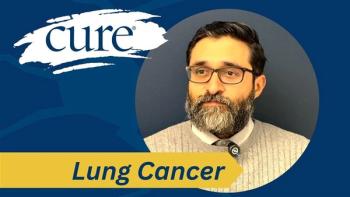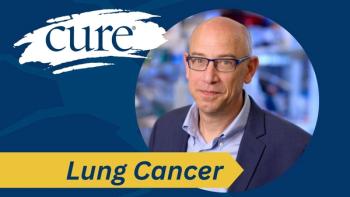
Diagnosis and Treatment of Small Cell Lung Cancer
Transcript:
Nancy MacMillan: I remained on the treatment for my non-small cell lung cancer through August of 2018, and during that time I really — most of the time — was very normal. We traveled. I got my husband to go to Europe not once but twice, and it was on that last trip in August of 2018 when I noticed that I was not feeling quite energized. And I came home and began to have my regular scans, and that’s when we found out that, in fact, I did have small cell also, in addition to the non-small cell lung cancer.
I must admit, I had taken it for granted that when one changed it would not even include that the other one was still present. But in fact, I do have both of them, non-small cell and small cell lung cancer. My husband had done a little bit of research on and was able to explain to me a little bit more about it.
I was kind of incredulous wondering, “Gosh, what else is there out there for me for treatment?” I think a lot of times at this point, because I’d had non-small cell lung cancer and was functioning so normally, a lot of friends and associates and family just assumed that maybe I’d cured it. And then others at times may have asked questions. For example, an insensitive type of question was asking me what my life expectancy was, and it was kind of hard for me to answer that one at that time. And many times, when people heard that I was going back into a different treatment they said, “Oh, I thought that you’d gotten rid of all that.” But again, this is not anything that is not abnormal when you’re not around a subject like a particular type of cancer at that point. Did you ever notice anything that was said?
Dan MacMillan: No, but I’ve had other people say, “Oh, I didn’t know she still had to be treated.” They thought that she was treated and cured. And of course, we were told from the get-go that there’s no real likelihood of an absolute cure with this disease; it would be treated like a chronic disease.
Nancy MacMillan: Like the diabetes situation.
Dan MacMillan: And that’s exactly what it’s been. When we did the research—a lot of people say don’t do the research because you’ll see all these horrible statistics in there—our son, who’s a doctor, said, “Well, statistics take into account people who have no hope of being cured for various and other reasons.” Certainly, Nancy has survived and had a very active and fulfilling life for a number of years beyond what the statistics would have predicted. So for people going through this, all hope is not gone. Because it’s just amazing what these really bright and dedicated oncologists and radiation oncologists and surgeons and everybody are doing in this field, and it probably gets better every day.
Nancy MacMillan: It was about this time, too, that I did change oncologists to a doctor here in Charlotte, North Carolina, at Levine Cancer Institute, who specializes in lung cancer. And she was most instrumental in beginning my treatment for small cell lung cancer, which was the chemotherapy and radiation, not at the same time. I’ve heard of some people having to do that. And I did go on six rounds of chemotherapy, I would say with 21-day intervals in between. There were very noticeable side effects, etc. I was able to manage.
Following a month off chemotherapy, I am now coming off radiation, which of all the treatments I’ve had, was probably one of the hardest. It was the hardest. Some of the things, depending on the strength and the part of the body that’s targeted during radiation, can take it from one extreme to another. Mine was pretty difficult since it was a nodule right up against the esophagus, so I’ve had to deal with some eating issues, but I’m three weeks out of it and starting to feel and be a lot better.
Dan MacMillan: Oh, much better. Much better.
Nancy MacMillan: He was really my caregiver during these days. He’s worked the whole time, but this is one time I think he was home a little bit more than he might have expected.
Dan MacMillan: The chemotherapy and radiation were probably the most toxic and difficult treatments that you’ve undertaken so far. Obviously with the chemotherapy, you said you had six treatments, but it was six treatments three days each, so you actually had 18. And the more she got into it, the more it affected her.
Nancy MacMillan: So cumulative.
Dan MacMillan: Yes, very cumulative, as was the radiation. And it’s difficult to see a person who is active and energetic and as high energy as Nancy be flat on her back and not even able to get up and get her own food. So you have to be prepared for something like that. But she bounced right back, and then the radiation was even more difficult. That was a little bit of a surprise to us because it affected her esophagus and we had to actually take her to the ER [emergency room] twice to get fluids and to get some medication to help her eat. And I was very concerned that she was not going to eat. But it wasn’t that long ago, just a couple of weeks ago, and now look at her—she’s bounced right back. So as difficult as that can get, it’s certainly worthwhile doing because she’s getting out there and doing the things she likes to do.
Nancy MacMillan: We’re trying to plan another trip.
Transcript Edited for Clarity





